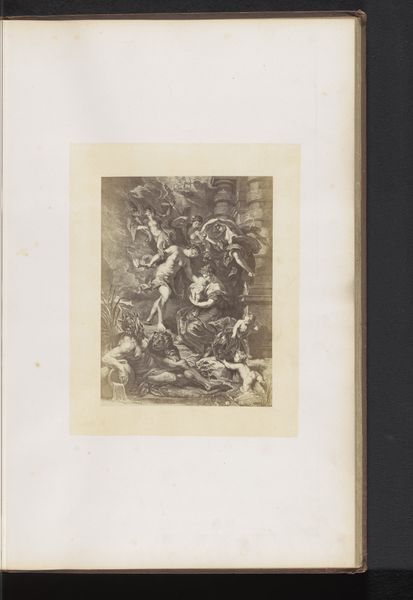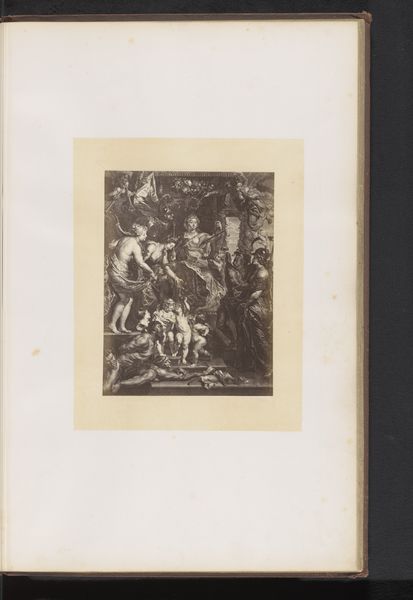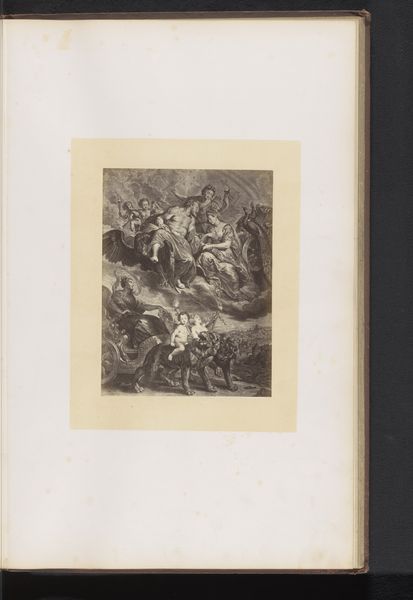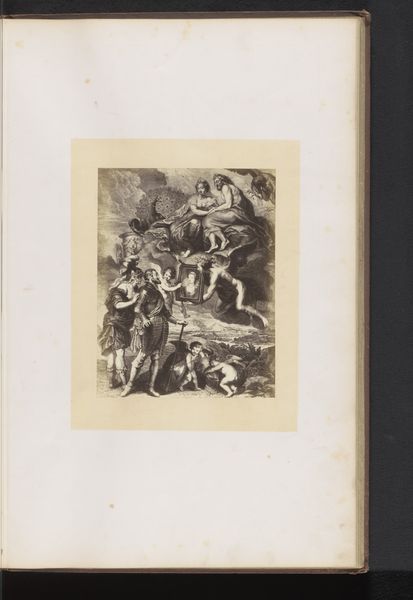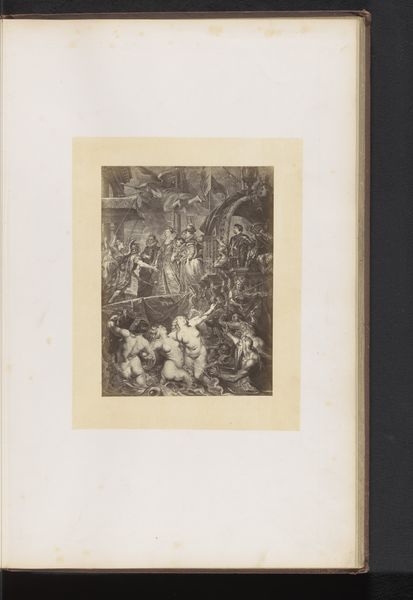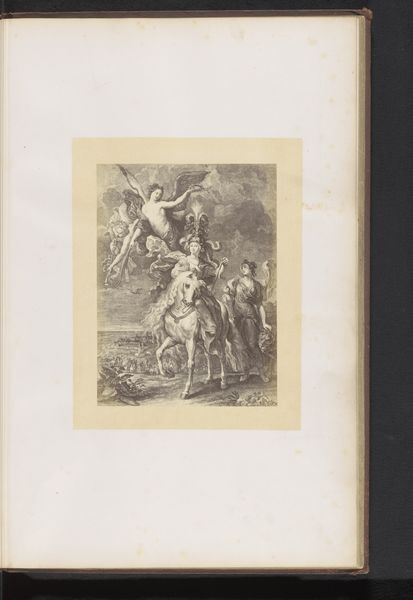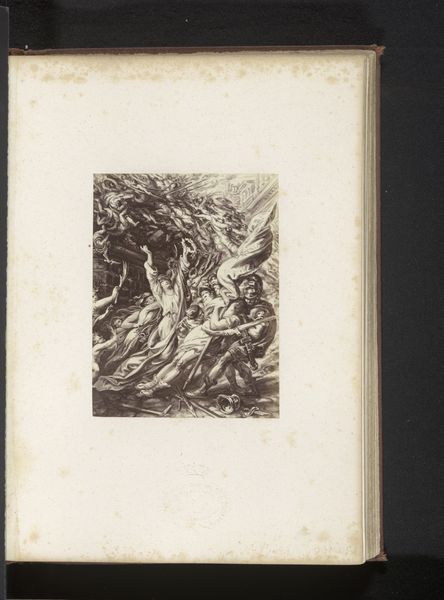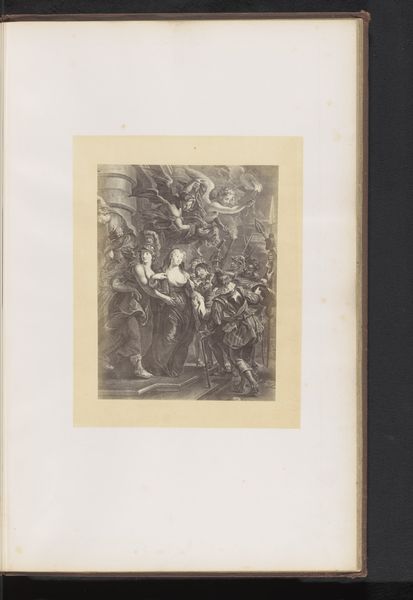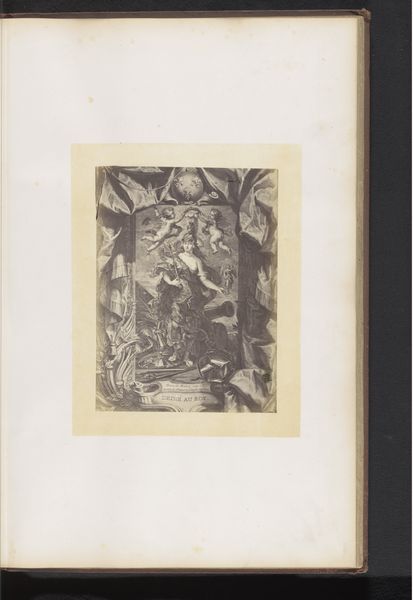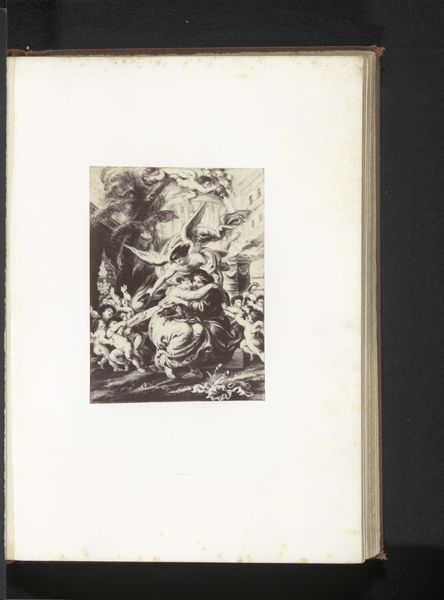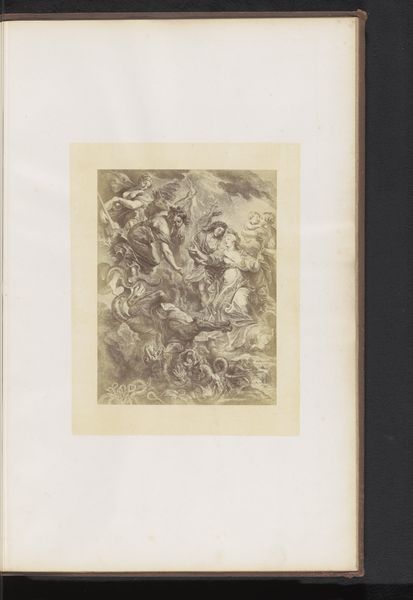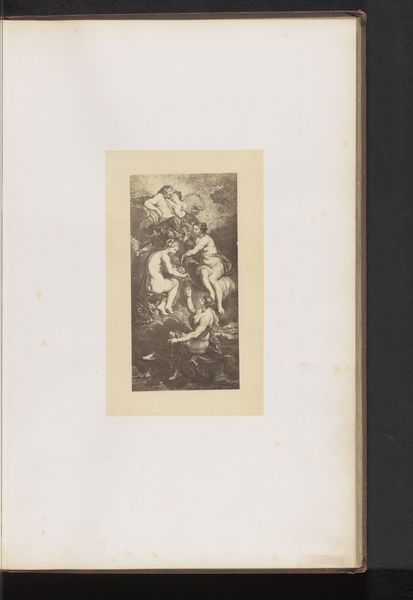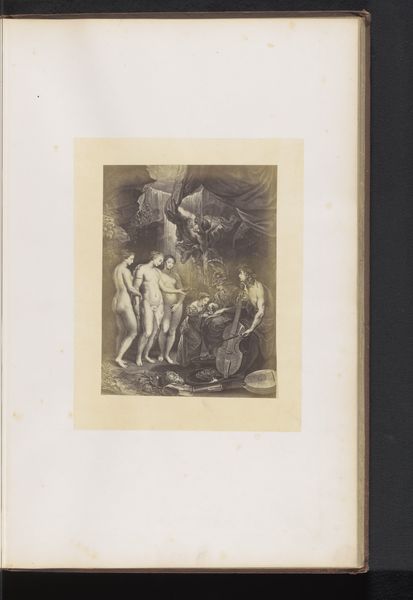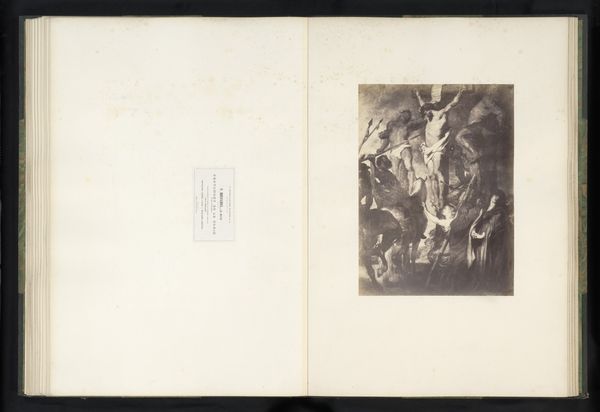
Fotoreproductie van een gravure van De bevalling van Maria de'Medici door Jean-Marc Nattier, naar het schilderij door Peter Paul Rubens before 1864
0:00
0:00
Dimensions: height 208 mm, width 158 mm
Copyright: Rijks Museum: Open Domain
Curator: Before us is a photograph of an engraving depicting "The Birth of Maria de' Medici." The engraving, created before 1864, is after a painting by Peter Paul Rubens. The photograph itself comes from the archive of Dechamps et Cie. at the Rijksmuseum. Editor: My first thought is how cleverly the engraver translated the dynamism of Rubens’ baroque painting into the static, linear language of printmaking. The textures still appear so rich. Curator: Absolutely. Let's consider the labor involved. The photograph preserves the printed image. Each line incised by the engraver's hand aimed to emulate Rubens' brushstrokes, which themselves served a grand narrative purpose for the Medicis. The layering here, from oil paint to engraving to photographic reproduction, presents an intriguing history of skilled production. Editor: It does. Notice the symbols so artfully placed: the mythological figures attending the queen's bedside suggest a divinely sanctioned birth and rulership. The putti above further reinforce the glorification. Even the specific placement of the figures, framing Maria, emphasizes her central importance. The artist invites us to understand this as a moment heavy with symbolic weight for France and for Europe. Curator: And while those symbols certainly conveyed meaning to contemporary viewers, consider, too, the economy of printmaking. Prints made the imagery available beyond the court. How did widespread availability affect reception of such imagery, how did it solidify and expand certain power structures, in society? Editor: Interesting, I am also drawn to the contrast in this image between the human realm and the heavenly. There is a clear attempt here to elevate Maria’s arrival in this world by infusing it with divine will, a trend very present at the time. Curator: Considering the many steps and materials, it reveals much about art and labor relations of the period and it speaks about how rulers secured and perpetuated authority and image. Editor: Indeed. Looking closely allows a broader glimpse into how imagery can be employed to carry multiple historical, and political, weight. Thank you for this interesting viewpoint.
Comments
No comments
Be the first to comment and join the conversation on the ultimate creative platform.
